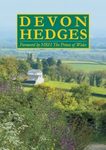![The Running Hare The Running Hare]()
Click to have a closer look
About this book
Customer reviews
Biography
Related titles
About this book
Traditional ploughland is disappearing. Seven cornfield flowers have become extinct in the last twenty years. Once abundant, the corn bunting and the lapwing are on the Red List. The corncrake is all but extinct in England. And the hare is running for its life.
Written in exquisite prose, The Running Hare tells the story of the wild animals and plants that live in and under our ploughland, from the labouring microbes to the patrolling kestrel above the corn, from the linnet pecking at seeds to the seven-spot ladybird that eats the aphids that eat the crop. It recalls an era before open-roofed factories and silent, empty fields, recording the ongoing destruction of the unique, fragile, glorious ploughland that exists just down the village lane. But it is also the story of ploughland through the eyes of man who took on a field and husbanded it in a natural, traditional way, restoring its fertility and wildlife, bringing back the old farmland flowers and animals. John Lewis Stempel demonstrates that it is still possible to create a place where the hare can rest safe.
Customer Reviews
Biography
John Lewis-Stempel is a writer and farmer. His many previous books include The Wild Life: A Year of Living on Wild Food, England: The Autobiography and the bestselling Six Weeks: The Short and Gallant Life of the British Officer in the First World War. His most recent book, Meadowland, was nominated for Countryfile's Book of the Year 2014 and won the Thwaites Wainwright Prize 2015. He lives on the borders of England and Wales with his wife and two children.
Nature Writing
By: John Lewis-Stempel(Author)
298 pages, b/w illustrations
"He describes beautifully the changing of the seasons and the habits of animals such as the hares that make their home in his field. The book is a superb piece of nature writing."
– Ian Critchley, Sunday Times
"That John Lewis-Stempel is one of the best nature writers of his generation is undisputed."
– Country Life
"Englightening and stylish [...] Readers who enjoyed the author's last book, Meadowland: The Private Life of an English Field, will find much in the same vein here: a mix of agricultural history, rural lore, topographical description and childhood memories. I learned a good deal [...] Lewis-Stempel is a fine stylist, adroitly conjuring scenes in which "medieval mist hangs in the trees" or "frost clenches the ground" [...] "
– Sara Wheeler, Observer
"A beautifully observed book, full of poetic descriptions. Brilliant and galvanising."
– Sunday Express
"Lewis-Stempel is a fourth-generation farmer gifted with an extraordinary ability to write prose that soars and sings, like a skylark over unspoiled fields. This wonderful book (a worthy follow-up to his brilliant Meadowland) is a hymn in praise of enlightened farming methods which reject lethal chemicals and allow insects, birds and flowers to thrive, as once they did. As an experiment Lewis-Stempel rents an ordinary arable field (his own property is a hill farm) to plough and manage in the old-fashioned way, transforming it into a traditional wheatfield to attract wildlife. Even – he hopes – hares. The work is back-breaking but the rewards are sublime. Like the hares, Lewis-Stempel's words dance."
– Bel Mooney, Daily Mail



































